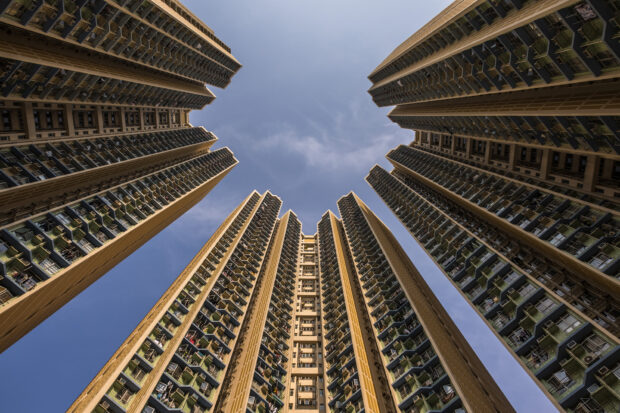
This picture taken on May 8, 2024 shows apartment blocks at Choi Ming Court housing estate in Hong Kong. Home to some of the world’s densest living districts and tallest skyscrapers, Hong Kong has more than 550 buildings that are at least 150 metres (490 feet) tall and is the “number one tallest city” in the world, according to the Council on Tall Buildings and Urban Habitat skyscraper database. (Photo by Dale DE LA REY / AFP)
HONG KONG, China — Home to some of the world’s densest living districts and tallest skyscrapers, Hong Kong has for decades mesmerized locals and visitors alike with its famed skyline.
The Chinese finance hub has more than 550 buildings that are at least 150 metres (492 feet) tall and is the “number one tallest city” in the world, according to the Council on Tall Buildings and Urban Habitat skyscraper database.
Hong Kong saw a construction boom in the latter half of the 20th century as its population skyrocketed, and development kept pace after the former British colony was handed over to China in 1997.
READ: Where New and Old Meet: The Heights and Sights of Hong Kong
The city’s two tallest buildings, the International Commerce Centre (484 metres) and the Two International Financial Centre (412 metres) stand gleaming on opposing sides of the Victoria Harbour and cast shadows on the rushing traffic below.
‘Monster Building’
Meanwhile, many of the city’s 7.5 million residents live in cramped flats, with households having a median per capita floor area of around 16 square metres in 2021.
A cluster of residential blocks nicknamed “Monster Building” in Quarry Bay was catapulted to international fame after it was featured in the 2014 blockbuster “Transformers: Age of Extinction”.
Older public housing complexes, such as Ping Shek Estate and Lai Tak Tsuen, have well-like central courtyards whose dramatic visual signature has made them popular with photographers.
Constrained by natural geography and a restrictive land policy, Hong Kong’s urban development in decades to come has nowhere to go but up, scholars say.